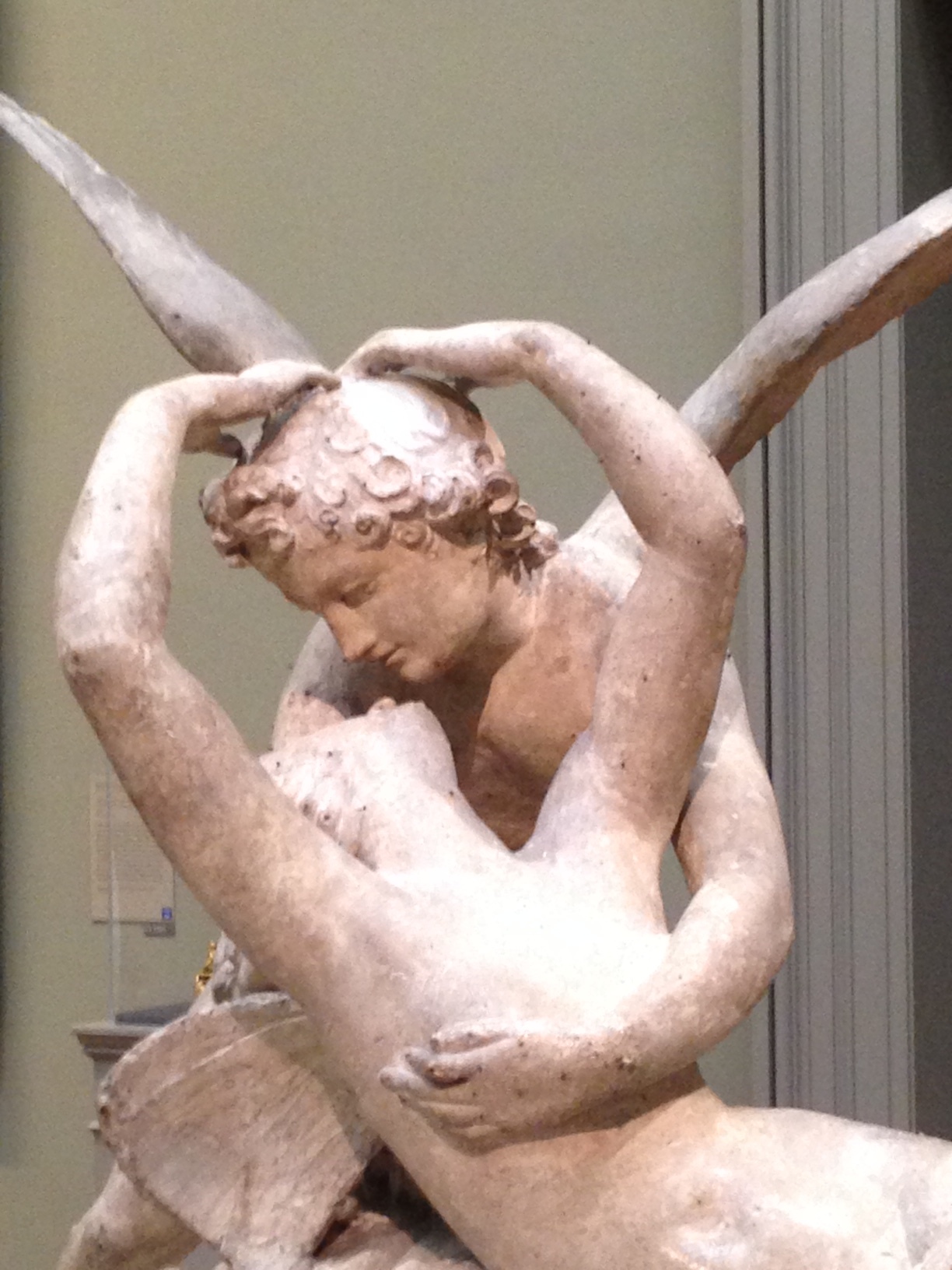"When we dead awaken, we find that we have never lived."
--Henrik Ibsen
A close-up of "I Am Beautiful," a Rodin sculpture
Almost a month ago, I went to the Rodin Museum in Phildadelphia with my sister and my husband. The morning opened up for us with the clarity of early spring, which arises from that special combination of wind and bright sunlight on the bare, naked tree branches, quivering with unopened buds, barely able to restrain the life within them...
"I think, therefore I am." --Descartes
We entered the museum through a garden, and rested beside the serene, rectangular pond.
All around us were sculptures.
Sisters in Rodin's garden...
From this bench, we could contemplate Eve's shame.
Inside the museum, I was struck by this sculpture, "The Crouching Woman." Apparently, it was a pose Rodin's model took when she was resting, in between her "real" poses, and it inspired him. Perhaps she was stretching?
Rodin liked to make Assemblages, which were like sculptural collages. For example, he combined "Crouching Woman" with "Falling Man" from "The Gates of Hell." Can you find "Falling Man"?
The Gates of Hell: they were not made to open...
Here is the resulting Assemblage:
"I Am Beautiful"
Rodin entitled this assemblage, "I Am Beautiful," after a poem by Baudelaire. When I learned this, of course I went home and stayed up all night reading Baudelaire poems. I found many translations of "I Am Beautiful," or "Beauty," and here is my favorite:
Beauty
I am fair, O mortals! like a dream carved in stone,
And my breast where each one in turn has bruised himself
Is made to inspire in the poet a love
As eternal and silent as matter.
On a throne in the sky, a mysterious sphinx,
I join a heart of snow to the whiteness of swans;
I hate movement for it displaces lines,
And never do I weep and never do I laugh.
Poets, before my grandiose poses,
Which I seem to assume from the proudest statues,
Will consume their lives in austere study;
For I have, to enchant those submissive lovers,
Pure mirrors that make all things more beautiful:
My eyes, my large, wide eyes of eternal brightness!
— poem by Baudelaire, translated by William Aggeler, The Flowers of Evil (Fresno, CA: Academy Library Guild, 1954)
A bust of Camille Claudel
Rodin had a young student with whom he had a long and passionate affair. (There is a great movie about her, Camille Claudel, which tells the story of her tragic life.) She herself was a sculptor of great talent, but did not achieve the fame of her teacher, probably because she was a woman. Much of her work had been, until recently, mistakenly attributed to her teacher, Rodin. For example, "Head of a Slave," and "Laughing Boy."
"Head of a Slave" and "Laughing Boy" by Camille Claudel
Our tour guide mentioned that Henrik Ibsen had written a play--his final play--based on the characters of Rodin and Claudel. So the next day I requested it from the library and read it. I didn't really love it. In fact, it left me feeling empty and wanting more. But I did get goosebumps from one line in particular, spoken by the Claudel-inspired character.
"When we dead awaken, we find that we have never lived."














